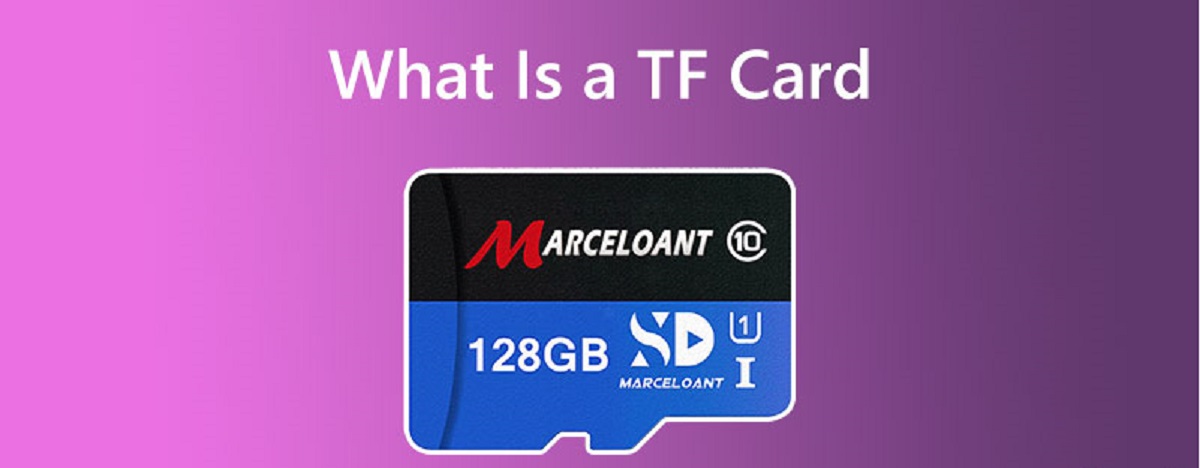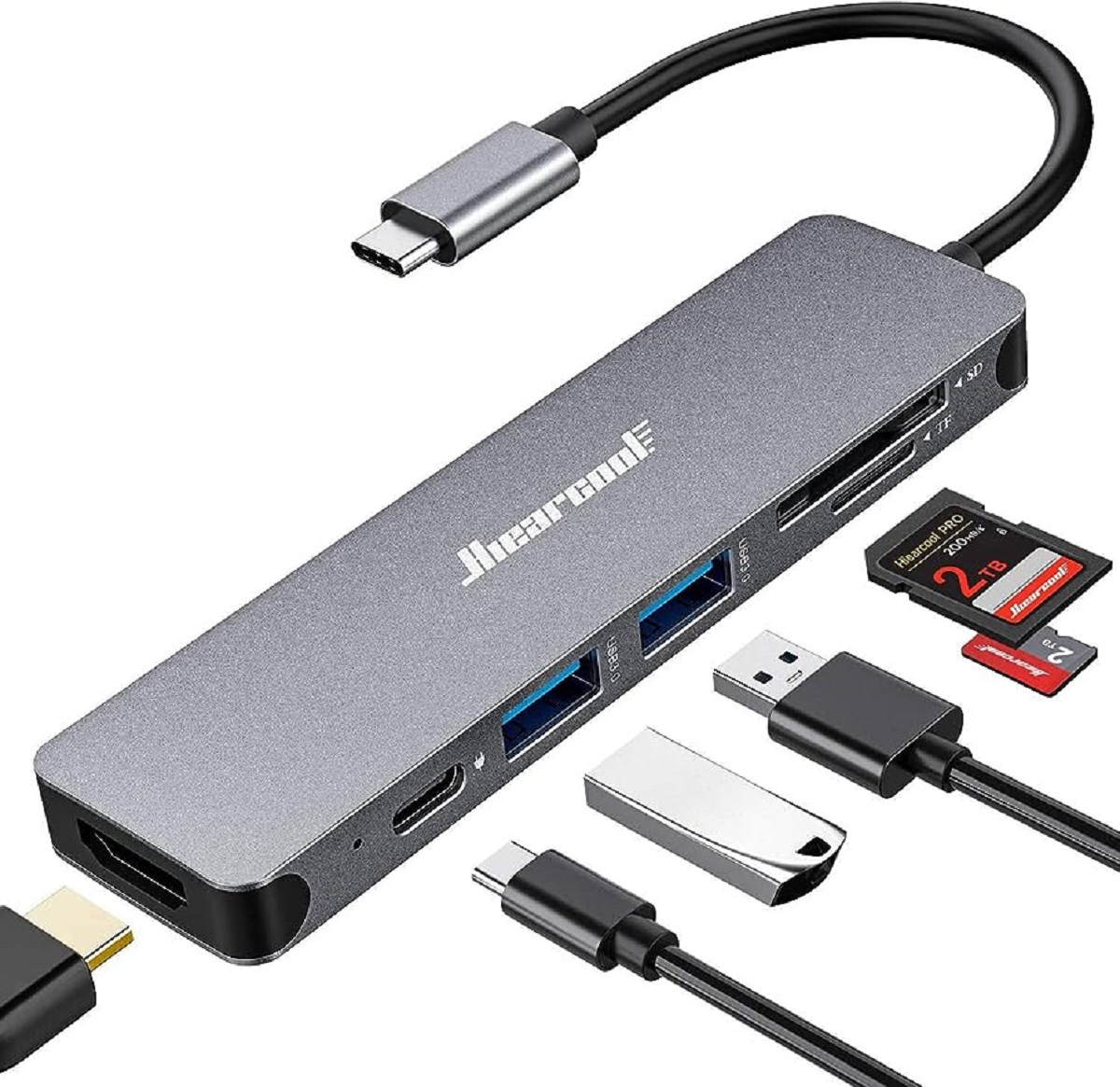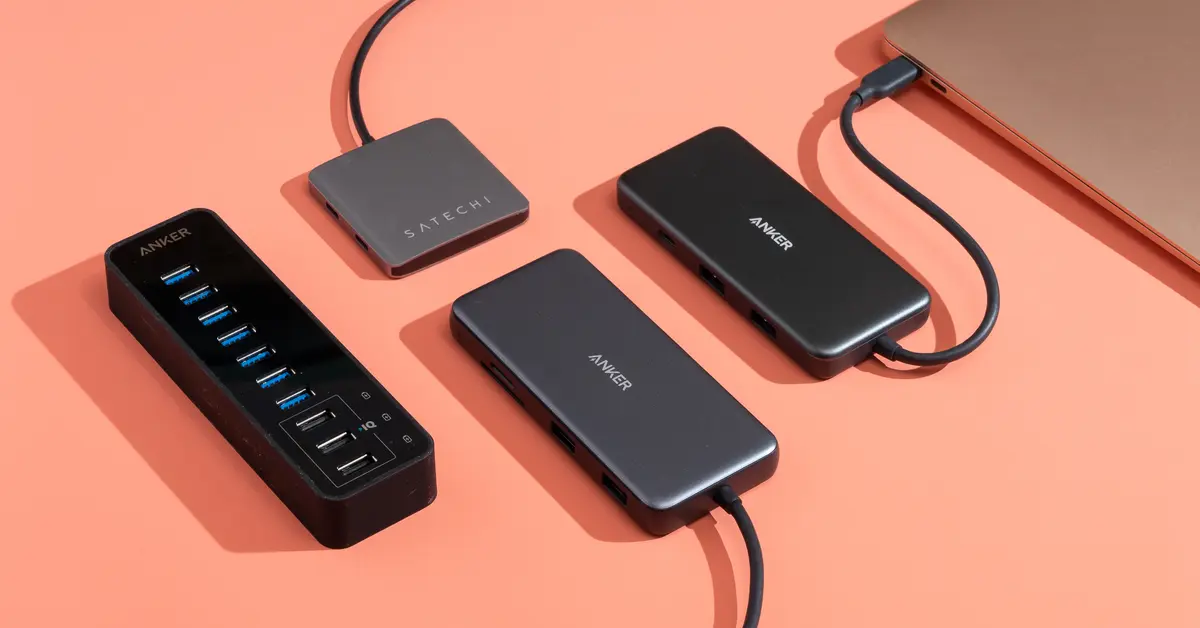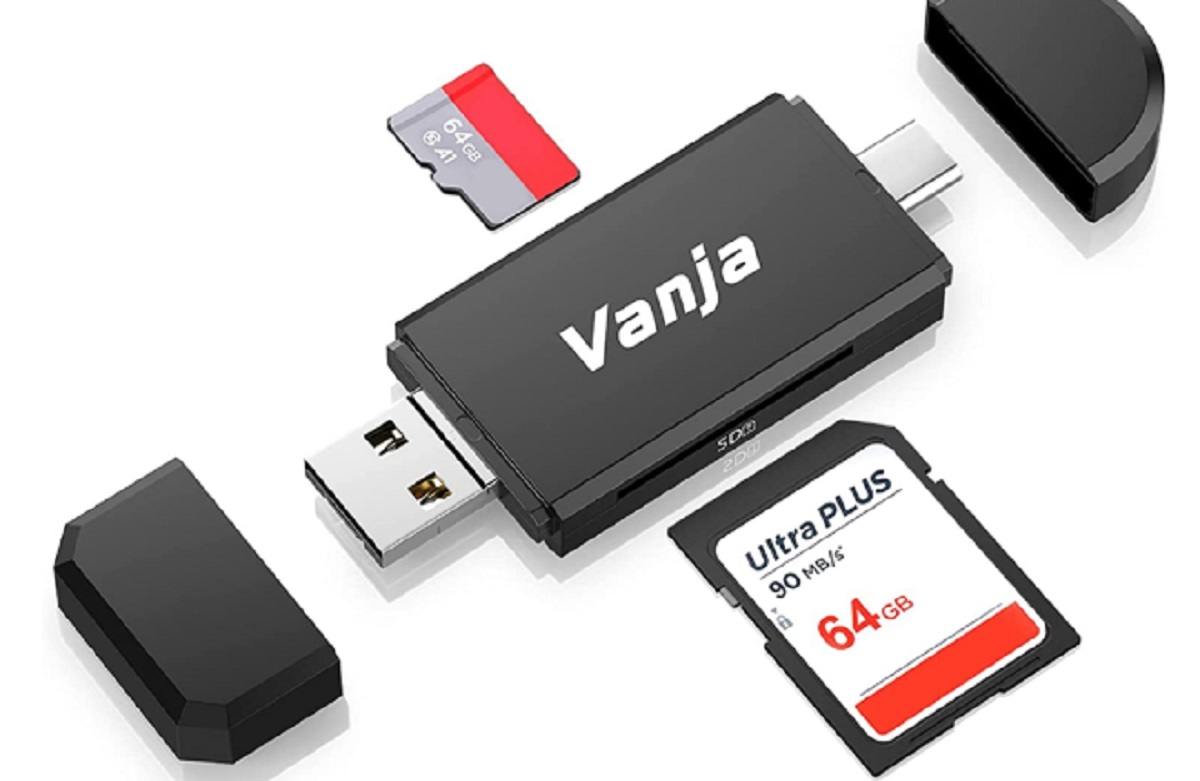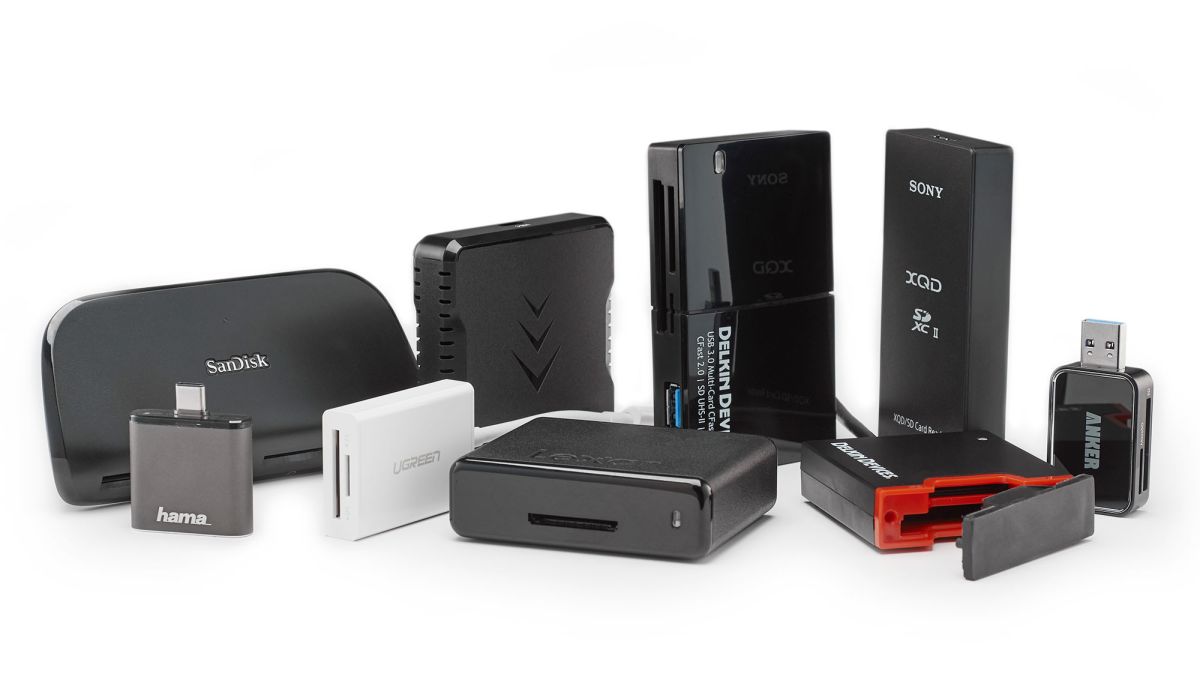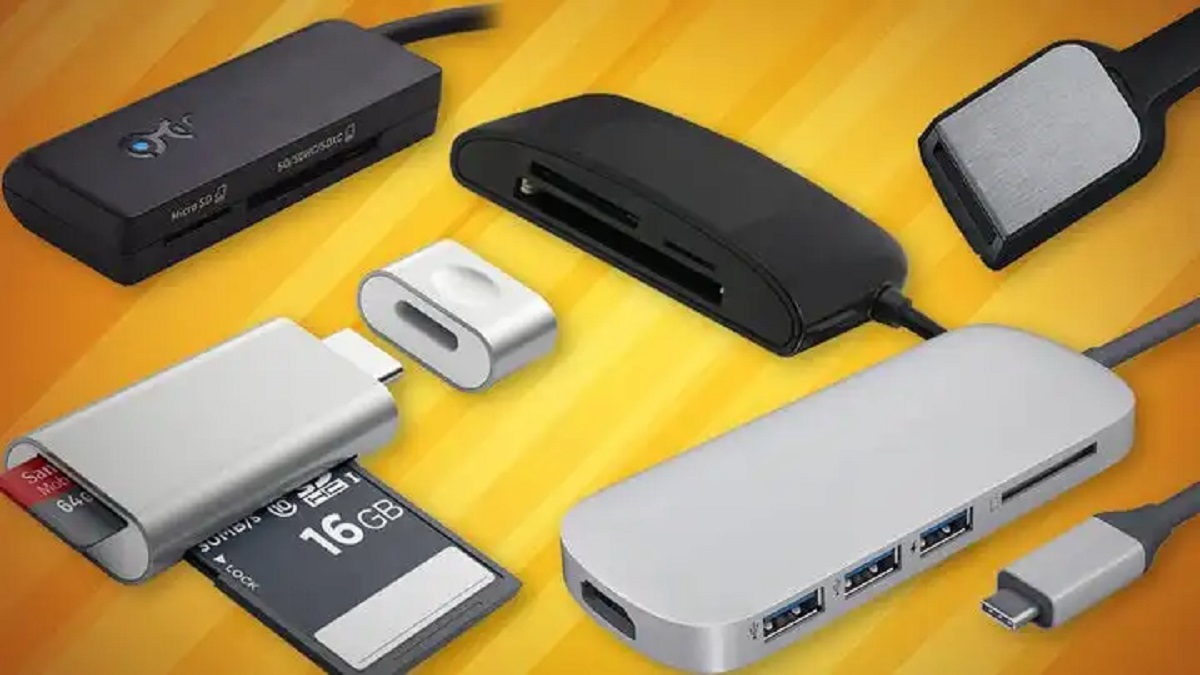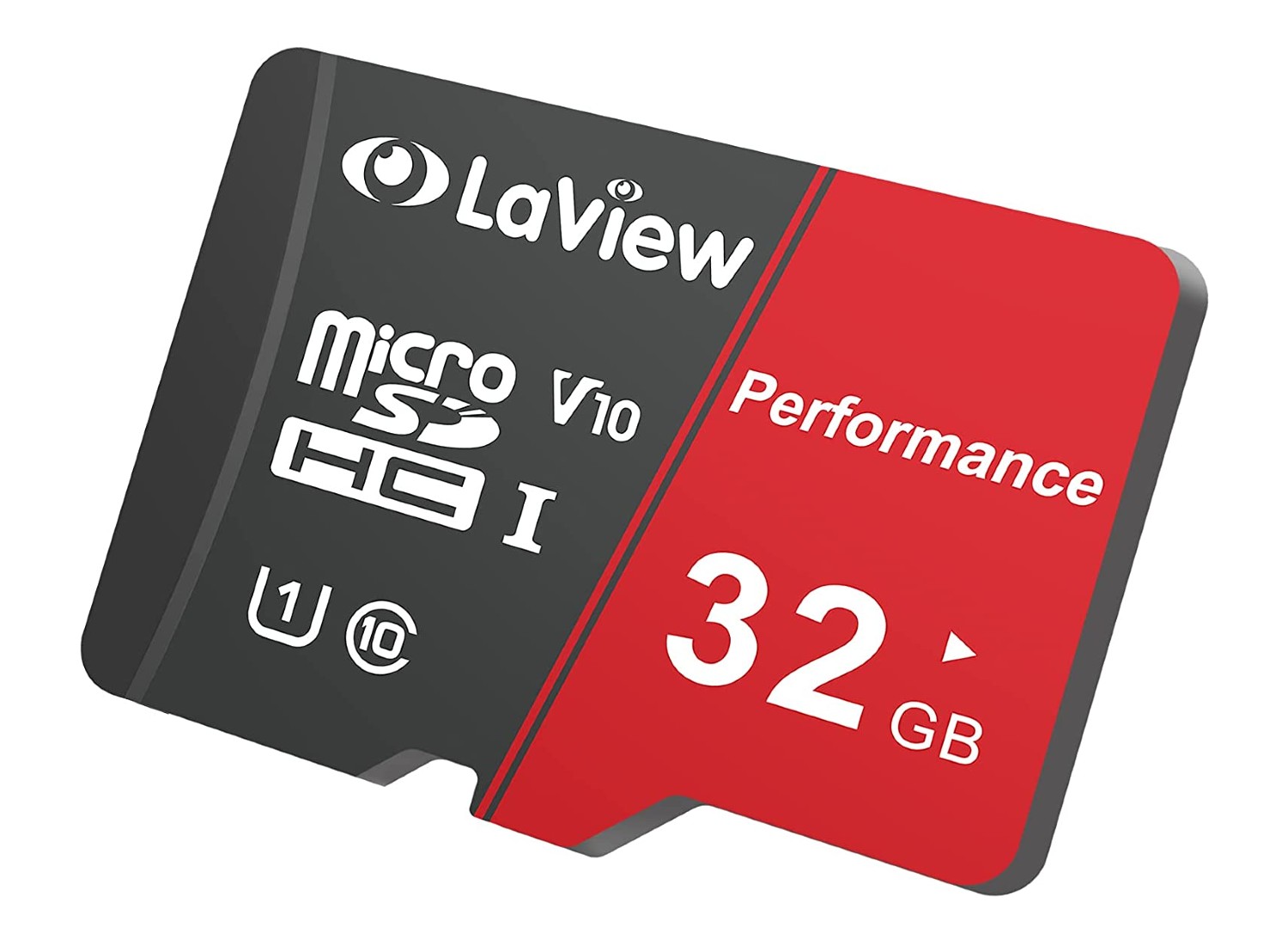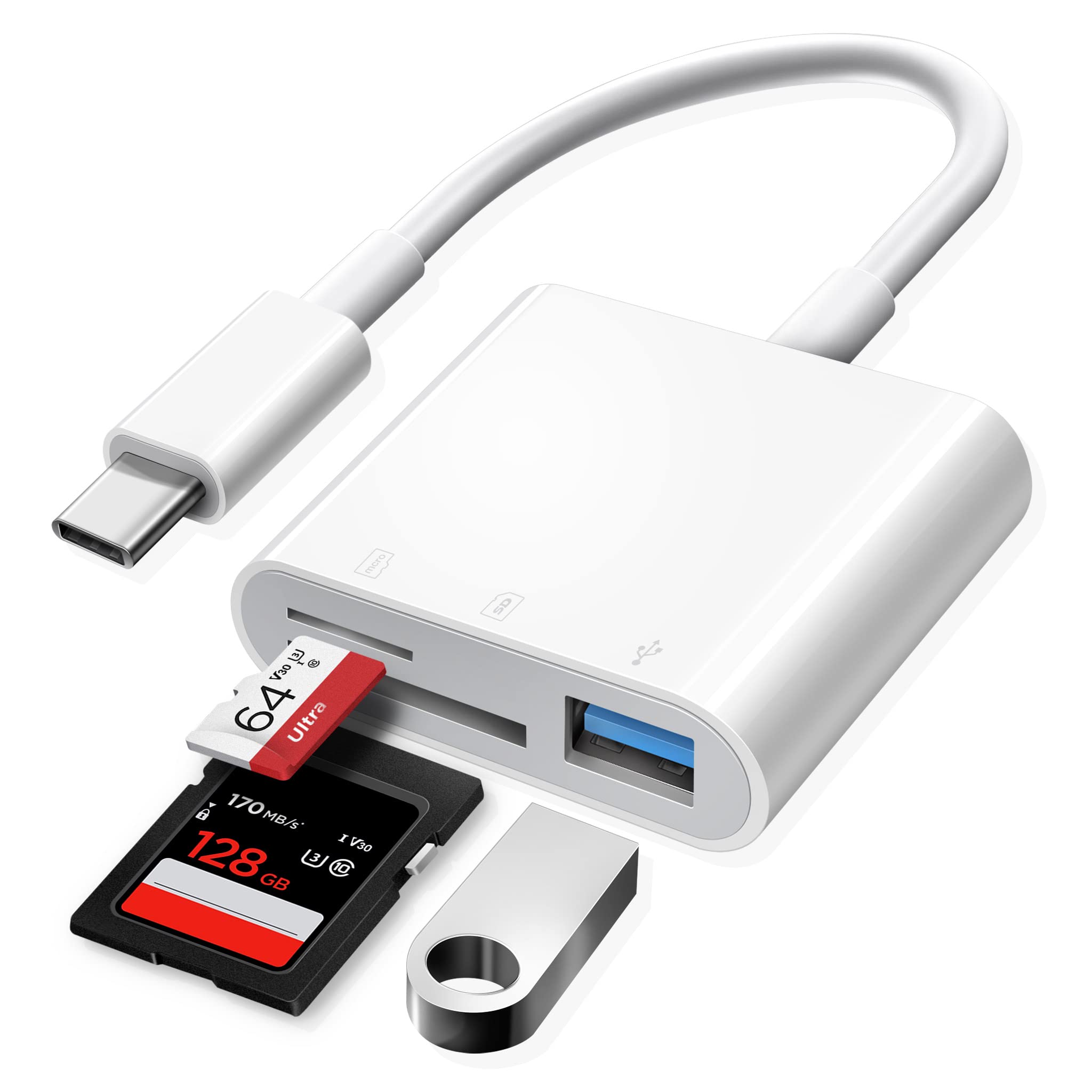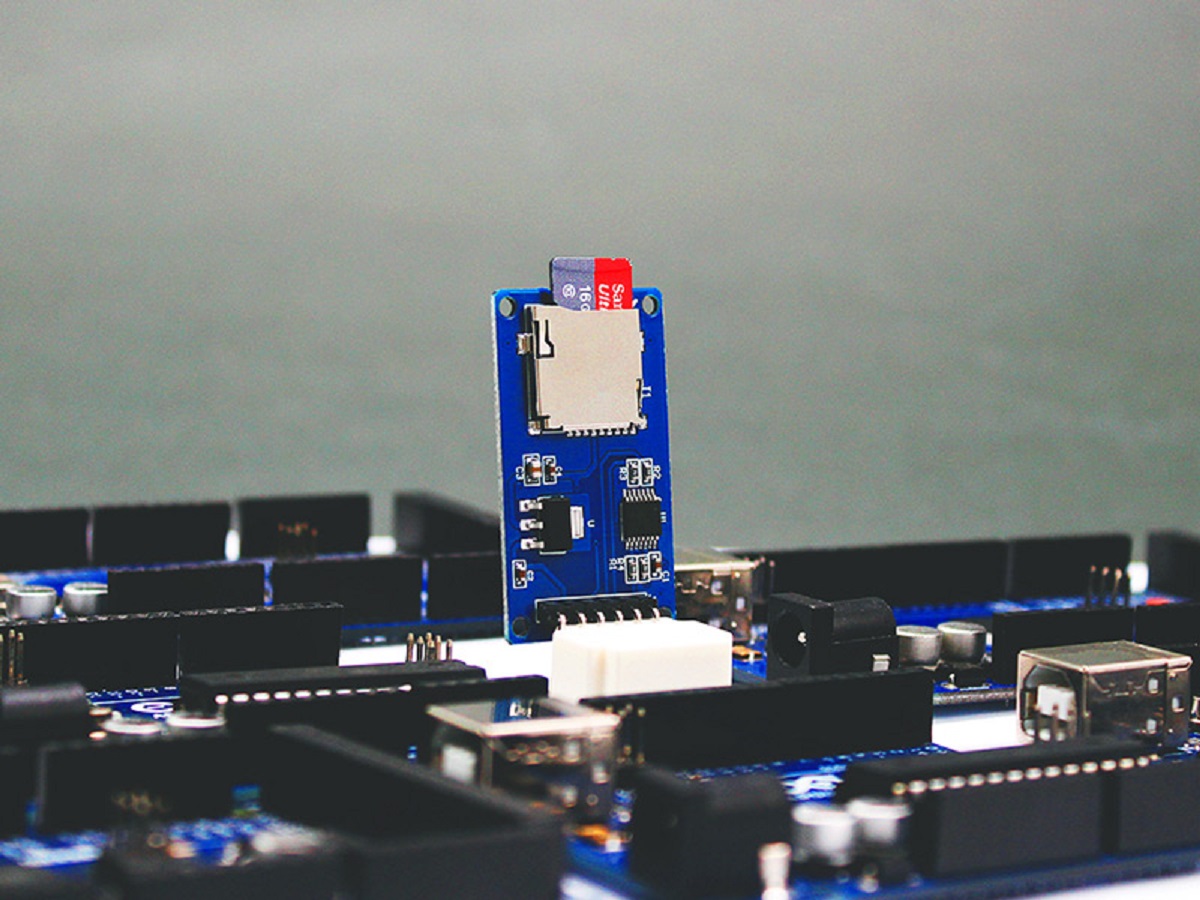Introduction
A TF SD card is a small, portable storage device specifically designed for digital cameras, smartphones, tablets, and other devices that require additional memory. TF stands for “TransFlash,” but it is more commonly known as a microSD card. These tiny cards have revolutionized the way we store and transfer data, allowing us to carry vast amounts of information in our pockets.
The TF SD card, with its compact form factor and impressive storage capacity, has become the go-to choice for expanding the storage of electronic devices. Whether you want to store more photos, videos, music, or apps, a TF SD card provides a convenient solution to the common problem of limited device storage.
In this article, we will delve into the world of TF SD cards, exploring their features, capacities, speed ratings, common uses, and tips for choosing and caring for them. Whether you are a professional photographer, a tech enthusiast, or simply someone looking to maximize their device’s storage capabilities, this guide will provide you with all the information you need.
But first, let’s understand how a TF SD card differs from other storage formats and why it has become so popular.
What Is a TF SD Card?
A TF SD card, also known as a microSD card, is a small, removable flash storage device commonly used in digital cameras, smartphones, tablets, and other electronic devices. It serves as a portable storage solution for storing and transferring data, including photos, videos, music, documents, and apps.
The TF SD card gets its name from its original name, TransFlash, and it is often referred to as microSD because of its tiny size. These cards are about the size of a fingernail but have impressive storage capacities ranging from a few gigabytes (GB) to several terabytes (TB).
TF SD cards are compatible with a wide range of devices, making them a versatile storage option. They can be easily inserted into a device’s TF SD card slot or used with an adapter to fit into standard SD card slots. This flexibility allows users to seamlessly transfer data between different devices or expand the storage capacity of their smartphones, cameras, or other gadgets.
TF SD cards use flash memory technology, which enables them to retain data even when power is removed. This makes them suitable for storing important files and media for extended periods. Additionally, TF SD cards have a durable design that protects the data from physical damage, such as water, shock, and extreme temperatures.
One of the key advantages of TF SD cards is their hot-swapping capability, meaning they can be inserted or removed from a device while it is powered on. This makes it easy to transfer files between devices or swap out cards with different storage capacities as needed.
In the next section, we will compare TF SD cards to other storage formats and discuss their unique features.
TF SD Card vs. Other Storage Formats
When it comes to storage formats, there are several options available on the market. Let’s compare TF SD cards to some of the other commonly used storage formats to understand their differences and advantages.
TF SD Card vs. Standard SD Card: TF SD cards are smaller in size compared to standard SD cards. While standard SD cards are bigger and require a specific slot size, TF SD cards can fit into devices with a TF SD card slot or used with an adapter for standard SD card slots. TF SD cards offer the same performance and functionality as standard SD cards but in a more compact form.
TF SD Card vs. USB Flash Drive: TF SD cards and USB flash drives both serve as portable storage solutions, but they differ in their form factor and connectivity. USB flash drives are typically larger and have a USB connector, requiring a USB port for connectivity. On the other hand, TF SD cards are much smaller and have a TF SD card interface, making them compatible with devices that have a TF SD card slot. TF SD cards are often used in smartphones, tablets, and digital cameras, while USB flash drives are commonly used with computers and laptops.
TF SD Card vs. Internal Device Storage: Many electronic devices come with a certain amount of internal storage, whether it’s a smartphone, tablet, or camera. TF SD cards provide an external storage solution that can be easily added to increase the device’s storage capacity. This is especially useful for devices with fixed internal storage that cannot be expanded or upgraded. TF SD cards allow users to store additional files, such as photos, videos, and apps, without worrying about running out of space on the device’s internal storage.
TF SD Card vs. Cloud Storage: Cloud storage services offer convenient access to data from any device with an internet connection. While cloud storage is a great option for backing up and accessing files, it does require a stable internet connection and may have limitations on the amount of storage available. TF SD cards, on the other hand, provide physical storage that can be accessed anytime, even without an internet connection. They offer a reliable and convenient way to store large amounts of data without relying on external servers.
In the next section, we will explore the different capacities available for TF SD cards and how to choose the right one for your needs.
Understanding TF SD Card Capacities
TF SD cards come in a variety of capacities to suit different storage needs. Understanding TF SD card capacities is essential when choosing the right card for your device. Here are the common capacity options available:
1. Standard Capacity (Up to 2GB): Standard capacity TF SD cards are the smallest in terms of storage space. While they may seem limited compared to higher capacity cards, they can still be useful for storing smaller files such as documents, music, and low-resolution photos.
2. High Capacity (HC, 4GB to 32GB): High capacity TF SD cards offer a significant increase in storage space compared to standard capacity cards. These cards are suitable for storing larger files, such as high-resolution photos, HD videos, and music libraries. They are commonly used in smartphones, tablets, and entry-level digital cameras.
3. Extended Capacity (XC, 64GB to 2TB): Extended capacity TF SD cards are designed for devices that require even more storage space. With capacities ranging from 64GB to a whopping 2TB, these cards can accommodate extensive media libraries, including 4K videos, RAW photos, and large applications. Extended capacity cards are commonly used by professional photographers, videographers, and users with high storage demands.
It’s important to note that the maximum capacity of a TF SD card that a device can support depends on its hardware and software limitations. Make sure to check your device’s specifications or user manual to ensure compatibility with the desired TF SD card capacity.
When choosing a TF SD card, it’s crucial to consider your specific storage needs. If you primarily use your device for capturing photos and videos, higher capacity cards will give you more room to store your media files. On the other hand, if you mainly use your device for basic document storage or casual music listening, a lower capacity card might be sufficient.
It’s always a good idea to leave some additional space available on your TF SD card to ensure optimal performance. This will help prevent any slowdowns or potential issues that can occur when a card reaches full capacity.
In the next section, we will dive into the speed ratings of TF SD cards and why they are crucial for certain applications.
Speed Ratings of TF SD Cards
The speed rating of a TF SD card refers to its data transfer speed, which determines how quickly it can read and write data. Speed ratings are especially important for tasks that require fast data transfer, such as capturing high-resolution photos or recording HD videos. TF SD cards are classified into different speed classes to indicate their performance capabilities. Here are the common speed classes:
1. Class 2 (2MB/s): Class 2 TF SD cards have a minimum sustained write speed of 2MB/s. While they are considered the slowest option, they can still handle basic tasks like capturing standard-definition photos and videos.
2. Class 4 (4MB/s): Class 4 TF SD cards have a minimum sustained write speed of 4MB/s. They are suitable for recording standard-definition videos and capturing high-resolution photos.
3. Class 6 (6MB/s): Class 6 TF SD cards have a minimum sustained write speed of 6MB/s. They can handle recording HD videos and capturing high-resolution photos with ease.
4. Class 10 (10MB/s): Class 10 TF SD cards have a minimum sustained write speed of 10MB/s. They are recommended for capturing Full HD (1080p) videos and recording high-resolution photos in burst mode.
In addition to the speed classes mentioned above, there are also higher speed classes, such as UHS (Ultra High Speed) classes, including UHS-I and UHS-II. These classes offer even faster read and write speeds, making them ideal for professional photography and videography, as well as other demanding applications.
When choosing a TF SD card, consider the speed requirements of your device and the type of tasks you will be performing. If you frequently capture high-resolution photos or record HD videos, opting for a higher speed class will ensure smoother and faster data transfers, reducing the risk of buffering or dropped frames.
It’s worth noting that the device you use also plays a crucial role in determining the actual transfer speed. If your device’s TF SD card slot is only compatible with lower speed classes, using a higher speed-rated card might not necessarily result in faster performance.
Now that you understand the speed ratings of TF SD cards, let’s explore some common uses of TF SD cards in the next section.
Common Uses of TF SD Cards
TF SD cards have a wide range of applications and are commonly used in various devices for different purposes. Here are some common uses of TF SD cards:
1. Photography and Videography: TF SD cards are extensively used in digital cameras and camcorders to store photos and videos. Whether you are a professional photographer or an amateur enthusiast, TF SD cards provide a convenient and portable way to capture and store high-quality images and footage. They are especially crucial when shooting in RAW format or recording videos in high resolutions like 4K.
2. Mobile Storage Expansion: Many smartphones have a limited amount of internal storage, which can fill up quickly with apps, photos, videos, and other files. TF SD cards offer a simple and cost-effective way to expand the storage capacity of your smartphone. You can store and access files, media, and apps directly from the TF SD card, freeing up precious internal storage space.
3. Music and Media Storage: TF SD cards are popular for storing and playing music on portable media players or smartphones. With the ability to store thousands of songs, TF SD cards provide a convenient way to carry your entire music library wherever you go. They can also be used to store and play other media files like videos, podcasts, and audiobooks.
4. Gaming: Some gaming consoles, such as the Nintendo Switch, support TF SD cards to expand their storage capacity. This allows gamers to download and store a large number of games, DLCs (downloadable content), and updates without worrying about limited internal storage.
5. Data Backup and Transfer: TF SD cards are often used for data backup and transfer. Whether you want to back up important files from your computer or transfer data between devices, TF SD cards provide a convenient and portable solution. They are also useful for moving files between devices that have TF SD card slots, such as cameras and laptops.
6. Navigation and GPS Systems: TF SD cards are utilized in navigation and GPS systems to store maps and other location data. This allows users to have access to up-to-date and detailed navigation information, even in areas with limited or no internet connectivity.
As you can see, TF SD cards have a multitude of practical uses across various devices and industries. The versatility and convenience they offer make them an essential accessory for many technology enthusiasts.
In the next section, we will provide some tips to help you choose the right TF SD card for your specific needs.
How to Choose the Right TF SD Card for Your Device
Choosing the right TF SD card for your device is essential to ensure optimal performance and compatibility. Here are some factors to consider when selecting a TF SD card:
1. Capacity: Determine how much storage space you require. If you mainly use your device for basic tasks like documents and music, a lower capacity card might suffice. However, if you capture high-resolution photos, record HD videos, or store a large media library, consider opting for a higher capacity card.
2. Speed Rating: Assess your device’s speed requirements. If you frequently perform tasks that require fast data transfer, such as shooting high-resolution photos or recording videos, choose a TF SD card with a higher speed class. This ensures smoother and faster read and write speeds, reducing any potential performance bottlenecks.
3. Device Compatibility: Check if your device supports TF SD cards or if it requires an adapter for standard SD card slots. Ensure that your device is compatible with the TF SD card capacity and speed rating you intend to use. Refer to your device’s specifications or user manual for detailed information.
4. Brand Reputation: Stick to reputable brands when purchasing TF SD cards. Well-established brands often provide better quality, reliability, and customer support. Look for brands like SanDisk, Samsung, Kingston, and Lexar, which are known for their quality TF SD cards.
5. Application-Specific Requirements: Certain applications, such as professional photography or 4K video recording, may have specific TF SD card requirements. Be aware of any recommended specifications for your intended use case to ensure optimal compatibility and performance.
6. Budget: Consider your budget when choosing a TF SD card. Higher capacity and faster speed classes tend to be more expensive. Strike a balance between your storage needs and budget to find the best TF SD card that meets your requirements without breaking the bank.
By considering these factors, you can confidently choose the right TF SD card for your device and ensure seamless storage expansion and data transfer.
Now that you know how to choose the ideal TF SD card, let’s move on to some essential tips for using and caring for TF SD cards.
Tips for Using and Caring for TF SD Cards
Proper usage and care of TF SD cards are crucial for maintaining their performance and longevity. Here are some valuable tips to ensure the optimal functioning and longevity of your TF SD card:
1. Formatting: Format your TF SD card in the device it will be primarily used with. This will ensure compatibility and optimal performance. However, be cautious when formatting, as it will erase all the data on the card. Make sure to back up any important files before formatting.
2. Safely Remove: Always use the “Safely Remove” or “Eject” option before removing your TF SD card from the device. This will ensure that any data being written or read is completed, reducing the risk of file corruption or data loss.
3. Avoid Physical Damage: Protect your TF SD card from physical damage, such as bending, dropping, or exposing it to extreme temperatures, moisture, or magnetic fields. TF SD cards are durable, but mishandling can result in data loss or rendering the card unusable.
4. Keep the Contacts Clean: The gold contacts on the TF SD card should be kept clean and free from dust, dirt, or moisture. When inserting or removing the card, handle it by the edges without touching the contacts. If necessary, use a soft, lint-free cloth to gently clean any debris from the contacts.
5. Regular Backups: Make it a habit to regularly back up the data on your TF SD card to a computer, external hard drive, or cloud storage. This ensures that even if your TF SD card becomes corrupted or damaged, your important files and memories are safe and accessible.
6. Use Reliable Card Readers and Adapters: When transferring data from your TF SD card to a computer or other devices, use reliable card readers and adapters. Cheap or faulty card readers can cause data transfer errors or damage to your TF SD card. Invest in quality card readers that offer stable and secure data transfer.
7. Avoid File System Conversion: It’s best to stick with the default file system format for your TF SD card. Avoid converting the file system unless absolutely necessary, as this can potentially lead to compatibility issues and data corruption.
8. Check for Firmware Updates: Occasionally, check for firmware updates for your TF SD card. Manufacturers may release firmware updates to address compatibility issues or improve performance. Follow the instructions provided by the manufacturer to update the firmware properly.
By following these tips, you can ensure the proper functioning and longevity of your TF SD card, protecting your valuable data and maximizing its performance.
Now that we’ve covered essential tips for using and caring for TF SD cards, let’s address some frequently asked questions about these storage devices in the next section.
Frequently Asked Questions about TF SD Cards
TF SD cards are widely used, but there may still be some questions or uncertainties regarding their usage. Here are answers to a few commonly asked questions:
Q1: Can I use a TF SD card in my device that only has an SD card slot?
A1: Yes, you can use a TF SD card in a device that has an SD card slot by using a compatible adapter. The adapter allows you to insert the TF SD card into the larger SD card slot, ensuring compatibility and functionality.
Q2: How do I know if my device supports a specific TF SD card capacity?
A2: To determine the maximum TF SD card capacity that your device supports, refer to the device’s specifications or user manual. It will provide information on the compatible capacities. It’s important to note that older devices may have limitations on the maximum capacity they can support, so it’s essential to check for compatibility before purchasing a TF SD card.
Q3: Is it possible to recover data from a corrupted TF SD card?
A3: In some cases, it is possible to recover data from a corrupted TF SD card using data recovery software. However, success may vary, and it is not always guaranteed. It’s crucial to stop using the card immediately after corruption is detected and seek professional assistance or use reliable data recovery software to attempt the recovery.
Q4: Can I use the same TF SD card in multiple devices?
A4: Yes, you can use the same TF SD card in multiple devices as long as they are compatible with the card’s capacity and format. TF SD cards are designed to be easily transferable between devices, allowing you to conveniently access your data across various devices.
Q5: Can I use a TF SD card that is formatted for one device in another device?
A5: Yes, TF SD cards that are formatted for one device can typically be used in other compatible devices. However, it’s important to note that using a TF SD card formatted for one device in another device will erase all the data on the card. Make sure to back up any important files before formatting or switching devices.
Q6: Are TF SD cards waterproof?
A6: TF SD cards are typically designed to withstand some degree of water exposure but may not be completely waterproof. They are generally built to be resistant to water, along with other potential hazards like shock and extreme temperatures. However, it’s still essential to protect your TF SD card from prolonged exposure to water and ensure it stays dry to prevent any damage.
These are just a few frequently asked questions about TF SD cards. If you have any specific concerns or inquiries, it’s always best to consult the manufacturer’s documentation or seek support from their customer service.
Now that we’ve covered frequently asked questions, let’s wrap up this guide to TF SD cards.
Conclusion
TF SD cards, or microSD cards, have become an indispensable tool for expanding storage capacity in various devices. Whether you need to store photos, videos, music, or other files, TF SD cards provide a portable and convenient solution.
In this guide, we explored what TF SD cards are, their differences compared to other storage formats, and their capacity options. We also discussed the importance of speed ratings in TF SD cards and their common uses in photography, mobile devices, gaming, and more.
When choosing a TF SD card, it’s crucial to consider factors such as capacity, speed rating, device compatibility, and budget. By following the tips provided, you can ensure the optimal performance and longevity of your TF SD card.
Lastly, we addressed frequently asked questions about TF SD cards, providing clarity on topics such as compatibility, data recovery, and device usage. If you still have specific inquiries or concerns, always refer to the manufacturer’s documentation or seek assistance from their customer support.
TF SD cards have transformed the way we store and transfer data, empowering us to carry vast amounts of information in our pockets. With their small size, impressive storage capacities, and versatility, TF SD cards have become an essential accessory for photographers, tech enthusiasts, and everyday device users alike.
Now armed with knowledge about TF SD cards, you can make informed decisions when purchasing, using, and caring for these invaluable storage devices.







